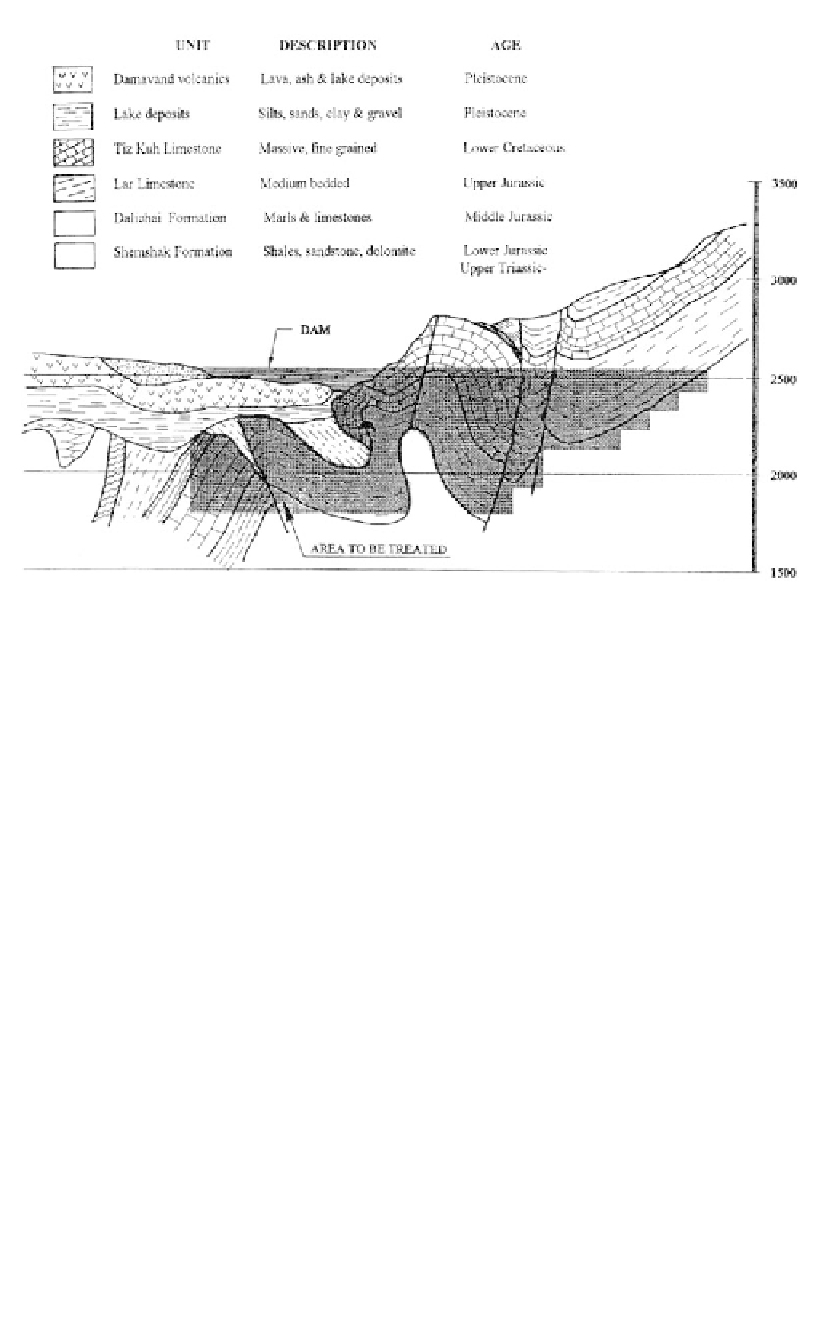Environmental Engineering Reference
In-Depth Information
Figure 3.29.
Lar Dam, cross section showing the predicted extent of ground treatment needed at the
dam site (Salambier et al., 1998).
Examples of most of the above have been described by Sowers (1975), Brink (1979),
Newton and Tanner (1987) and Wilson and Beck (1988).
Chen et al. (1995) have suggested that a rapidly rising water table in cavernous rock could
cause a “water hammer effect” - pressure waves which might accelerate or induce collapse
of overlying soils into cavities. First and subsequent fillings of a reservoir could provide these
rapid rises in a water table.
It is clear that for all sites in karst areas there will be some risk of ground surface col-
lapse affecting any part of the project works, including borrow areas and haul roads as
well as the dam embankment and associated works. The worst imaginable event of this
type would be a major sinkhole forming beneath a dam embankment during reservoir
operation.
The possibility of this situation arising at Lar Dam has been accepted by Salambier et
al. (1998). The dam has been extensively monitored, with instruments including stand-
pipe, hydraulic and pneumatic piezometers. From a flow net for the dam and its foundation
(
Figure 3.30
)
they point out that:
-Vertical gradients exist in the upstream part of the core, in the upstream transition zone
and in the alluvial foundation, and
- Piping of any of these materials is possible if the reservoir is operated at higher levels.
They conclude that “…development of a large sinkhole cannot be excluded. If this were
to happen, complete failure of the embankment could occur”.
Uromeihy (2000) warns that there is a risk of sinkhole development also beneath the
downstream shoulder.

